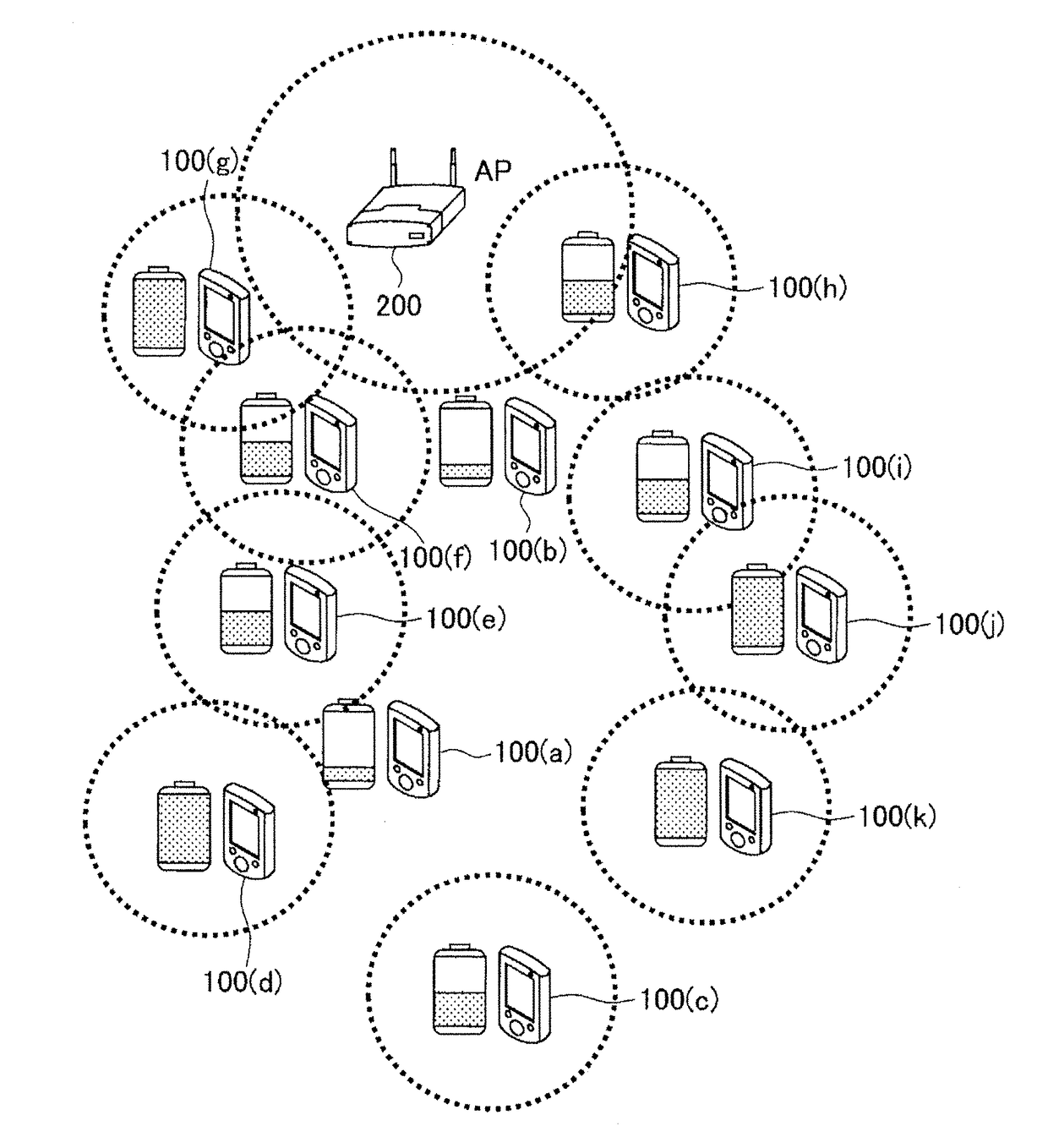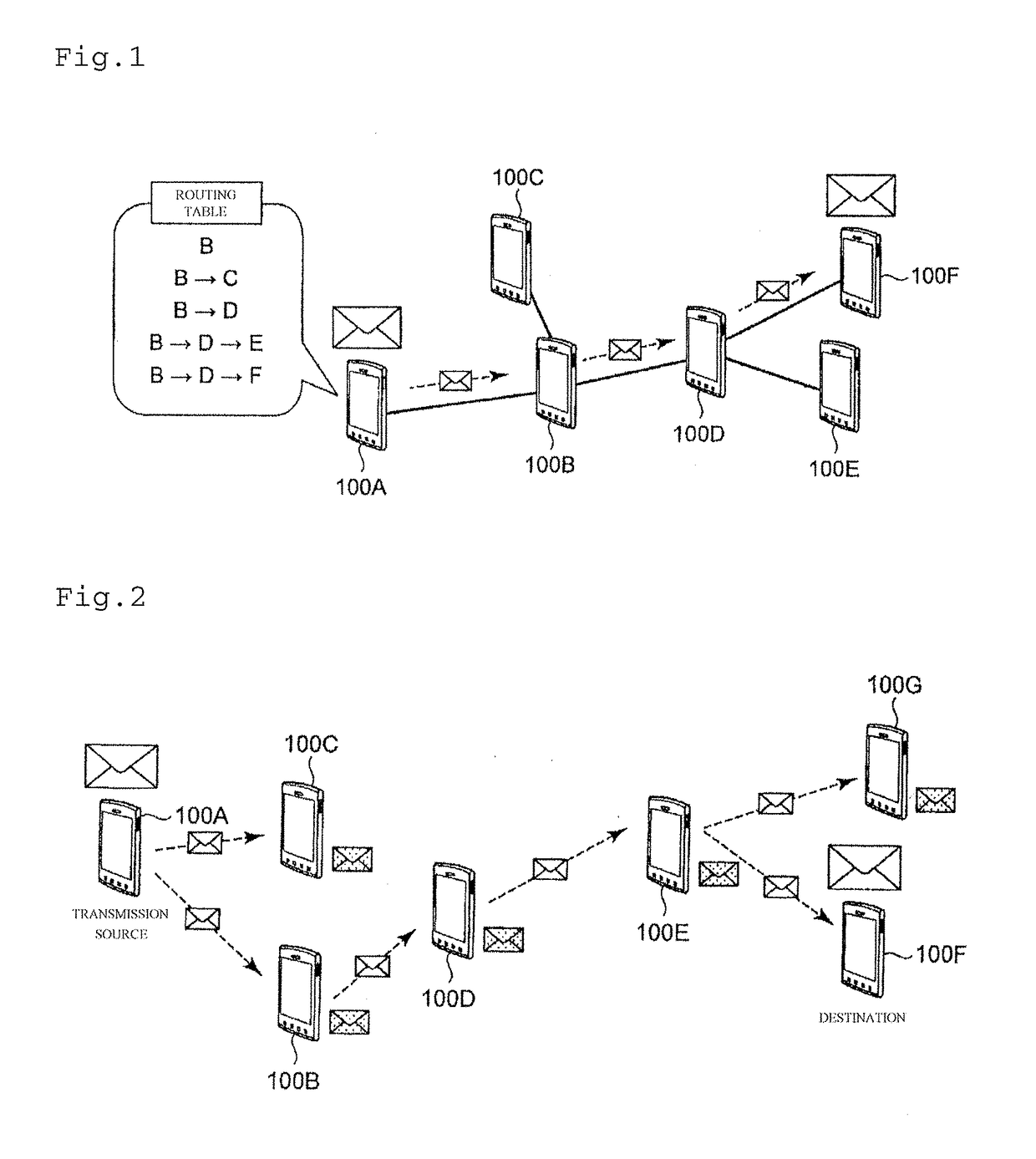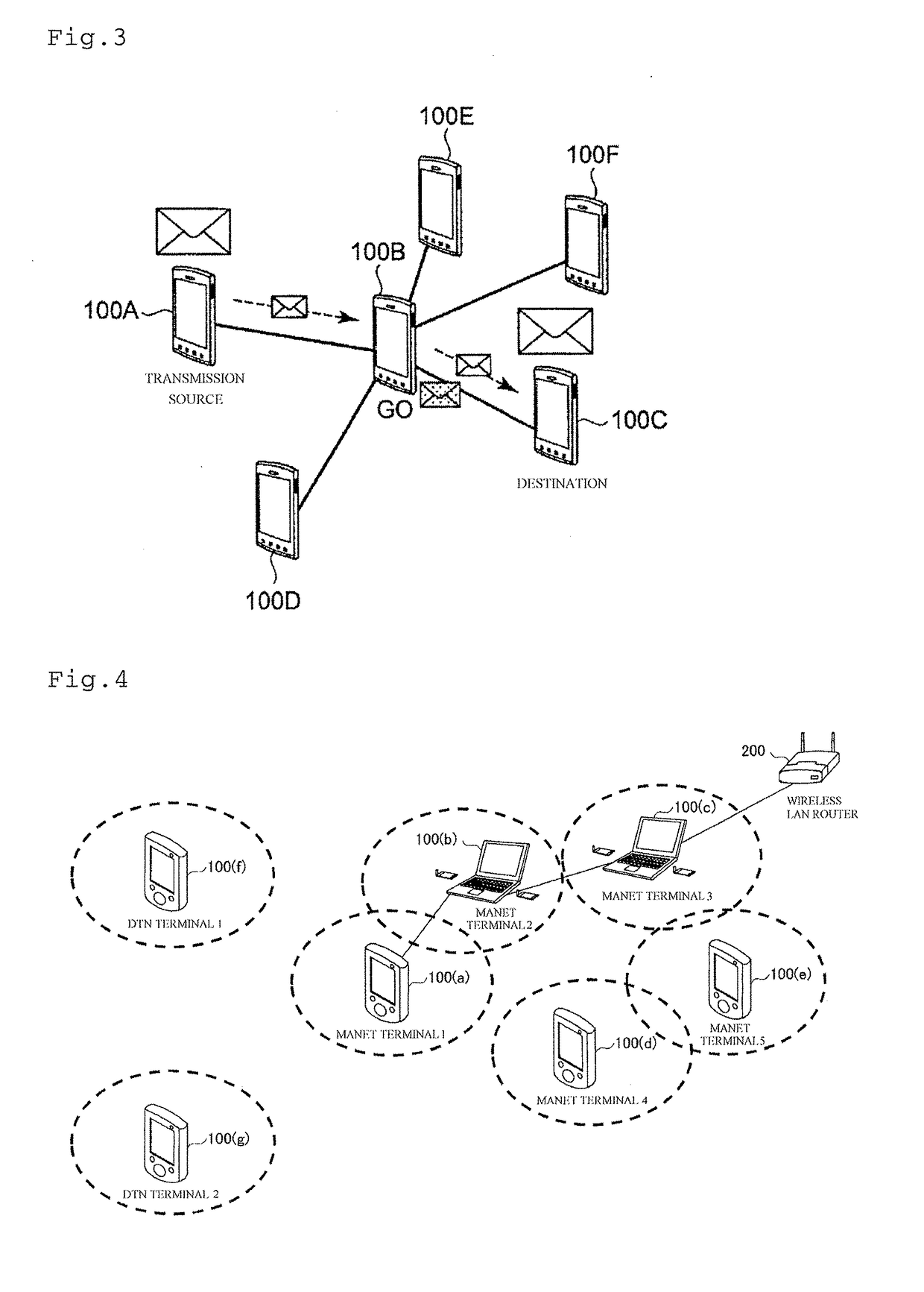Communication control method and mobile terminal
a communication control and mobile terminal technology, applied in the field of new devices, can solve the problems of reachability of communication, efficiency of communication, etc., and achieve the effect of maximizing the spread speed of relay transfer, scalability of communication capacity, and maximizing the spread efficiency of relay transfer
- Summary
- Abstract
- Description
- Claims
- Application Information
AI Technical Summary
Benefits of technology
Problems solved by technology
Method used
Image
Examples
first example
[0161] First Example
[0162]As a result of the selection of the size of the terminal group based on the degree of the stability of the End-To-End communication route up to the parent node terminal serving as the GO in the “relay system based on the terminal group” according to the present embodiment, in any of the terminal groups, the size is constantly one hop. The first example corresponds to this special case. Since in the first example, in any of the terminal groups, the size is constantly one hop, the network connection topology of each terminal group is the star-type network connection topology shown in FIG. 3, and within the terminal group, the packets are relayed and transferred in the “star connection-type packet relay system”.
[0163]In the star-type connection network in which the “star connection-type packet relay system” shown in FIG. 3 is performed, the number of hops capable of relaying the transfer data is restricted to two hops. Hence, the first example discloses a tech...
second example
[0233] Second Example
[0234]A second example will be described below with reference to FIG. 19. In the following description of the second example, the same description as in the first example will be omitted, and only differences from the first example will be described.
[0235]As in the first example, in the second example, after the GO determines that the dissolution and the reconfiguration of the terminal group are performed, the GO which receives the Intent values from all the child node terminals within the terminal group selects, as the subsequent new GO, the child node terminal which transmits the maximum Intent value. Then, the GO transmits, to the selected child node terminal, a selection notification for notifying that the child node terminal is selected as the subsequent new GO, and dissolves the current terminal group. The child node terminal receiving the selection notification starts an operation as the subsequent new GO, and in order to form the subsequent new terminal ...
PUM
 Login to View More
Login to View More Abstract
Description
Claims
Application Information
 Login to View More
Login to View More - R&D
- Intellectual Property
- Life Sciences
- Materials
- Tech Scout
- Unparalleled Data Quality
- Higher Quality Content
- 60% Fewer Hallucinations
Browse by: Latest US Patents, China's latest patents, Technical Efficacy Thesaurus, Application Domain, Technology Topic, Popular Technical Reports.
© 2025 PatSnap. All rights reserved.Legal|Privacy policy|Modern Slavery Act Transparency Statement|Sitemap|About US| Contact US: help@patsnap.com



